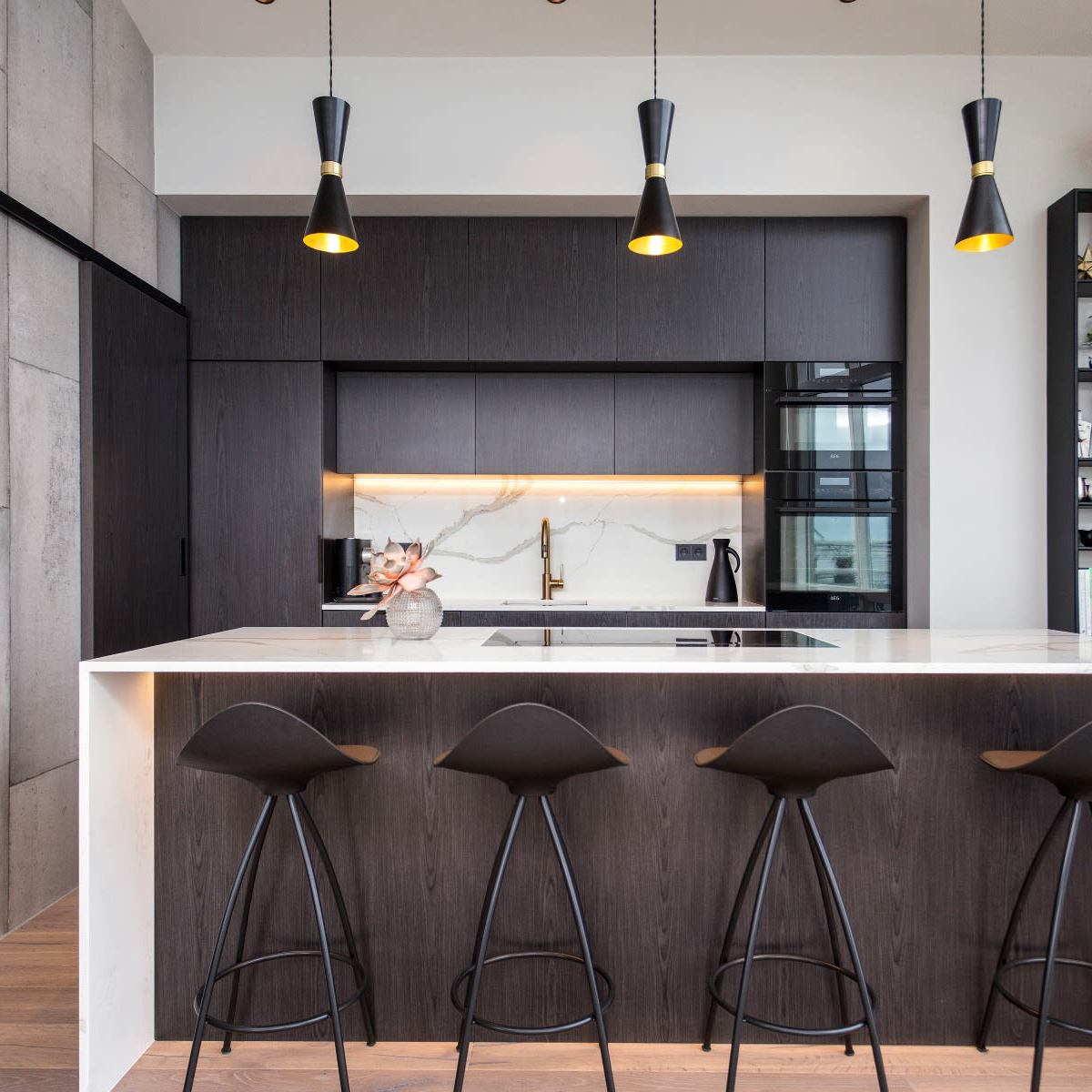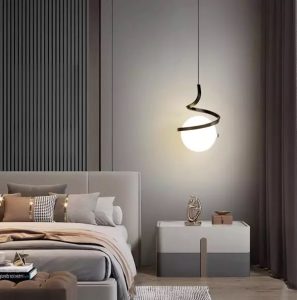
Illuminate Your Space with a Stunning Dining Room Pendant Light
Dining room pendant lights are a popular choice for homeowners looking to add style and functionality to their dining space. Pendant lights are suspended from the ceiling by a cord, chain, or rod, and they provide focused lighting over the dining table. They come in a variety of styles, sizes, and materials, making it easy to find the perfect pendant light to complement your dining room decor.
One of the main benefits of using pendant lights in the dining room is their ability to create a warm and inviting atmosphere. The focused lighting they provide helps to highlight the dining table and create a cozy ambiance for meals and gatherings. Pendant lights also serve as a decorative element in the room, adding visual interest and enhancing the overall design aesthetic.
Choosing the Right Pendant Light for Your Dining Room
When choosing a rizishop pendant light for your dining room, there are several factors to consider. First, you’ll want to think about the size and scale of the pendant light in relation to your dining table. A general rule of thumb is to choose a pendant light that is about one-third the width of your dining table. This will ensure that the light is proportionate to the table and doesn’t overwhelm the space.
Another important factor to consider is the style of the pendant light. You’ll want to choose a pendant light that complements the overall decor of your dining room. If you have a modern or contemporary dining room, you may opt for a sleek and minimalist pendant light. On the other hand, if you have a more traditional or rustic dining room, you may prefer a pendant light with more ornate details or made from natural materials.
Types of Dining Room Pendant Lights
There are many different styles of pendant lights available for the dining room. Some popular options include drum pendants, lantern pendants, globe pendants, and mini pendants. Drum pendants feature a cylindrical shade that provides a soft and diffused light. Lantern pendants have an open frame design and often feature a traditional or vintage-inspired look. Globe pendants have a spherical shape and provide a more focused and direct light. Mini pendants are smaller in size and are often used in multiples to create a dramatic effect.
In addition to different styles, pendant lights also come in a variety of materials. Common materials used in pendant lights include glass, metal, wood, and fabric. Glass pendant lights are versatile and can work well in a variety of design styles. Metal pendant lights are durable and can add an industrial or modern touch to the dining room. Wood pendant lights bring a natural and rustic element to the space, while fabric pendant lights can add softness and texture.
Factors to Consider When Installing a Pendant Light in Your Dining Room
Before installing a pendant light in your dining room, there are several factors to consider. First, you’ll need to ensure that you have the necessary electrical requirements in place. If you’re replacing an existing light fixture, you may already have the wiring and electrical box needed for the pendant light. However, if you’re installing a pendant light in a new location, you may need to hire an electrician to install the necessary wiring and electrical box.
The placement of the pendant light is also important to consider. You’ll want to make sure that the light is centered over the dining table and at the appropriate height. A general guideline is to hang the pendant light about 30-36 inches above the table surface. This will provide ample lighting without obstructing the view or causing glare.
How to Measure for a Dining Room Pendant Light
To ensure that your pendant light is properly proportioned for your dining room, it’s important to take accurate measurements. First, measure the height of your ceiling from the floor to determine how much space you have to work with. This will help you determine the appropriate length for the pendant light’s cord, chain, or rod.
Next, measure the size of your dining table. The width of the pendant light should be about one-third the width of the table. For example, if you have a 6-foot long dining table, you’ll want to choose a pendant light that is approximately 2 feet wide. This will ensure that the light is proportionate to the table and provides adequate lighting coverage.
Tips for Hanging Your Dining Room Pendant Light

Hanging a pendant light in your dining room can be a relatively simple process if you follow a few key steps. First, turn off the power to the existing light fixture at the circuit breaker. This will ensure that you can safely work on the electrical connections without the risk of electrocution.
Next, remove the existing light fixture and disconnect the wiring. If you’re installing a new pendant light in a new location, you’ll need to hire an electrician to install the necessary wiring and electrical box.
Once the electrical connections are in place, you can begin hanging the pendant light. Start by attaching the mounting bracket to the ceiling using screws or other hardware provided with the pendant light. Then, attach the pendant light fixture to the mounting bracket using screws or other hardware provided.
Finally, turn on the power at the circuit breaker and test the pendant light to ensure it is working properly. Adjust the height of the pendant light as needed to achieve the desired lighting effect.
Maintenance and Cleaning of Dining Room Pendant Lights
To keep your dining room pendant lights looking their best, regular maintenance and cleaning are important. Dust and debris can accumulate on the surface of pendant lights over time, dulling their appearance and reducing their effectiveness.
To clean pendant lights, start by turning off the power at the circuit breaker to ensure your safety. Then, remove any glass shades or other removable parts from the pendant light fixture. Use a soft cloth or duster to gently remove dust and debris from the surface of the pendant light. If necessary, you can also use a mild cleaning solution and a soft cloth to wipe down the pendant light.
It’s important to avoid using harsh chemicals or abrasive materials when cleaning pendant lights, as this can damage the finish or surface of the fixture. Be sure to dry the pendant light thoroughly before reattaching any glass shades or other removable parts.
Enhancing Your Dining Room Decor with Pendant Lights
Pendant lights can serve as a focal point in your dining room and enhance the overall decor of the space. One way to make a statement with pendant lights is to choose a bold and eye-catching design. For example, you could opt for a pendant light with a unique shape or color that stands out against the rest of the room.
Another way to enhance your dining room decor with pendant lights is to use multiple lights in a row or cluster. This can create a dramatic effect and add visual interest to the space. For example, you could hang three pendant lights in a row over a long dining table, or cluster several mini pendants together for a more eclectic look.
Energy-efficient Dining Room Pendant Light Options
If you’re looking to reduce your energy consumption and lower your electricity bills, there are several energy-efficient options available for dining room pendant lights. LED pendant lights are a popular choice for their long lifespan and low energy consumption. LED lights use significantly less energy than traditional incandescent bulbs and can last up to 25 times longer.
Another energy-saving option for pendant lights is to use energy-efficient bulbs. Compact fluorescent bulbs (CFLs) and halogen bulbs are both more energy-efficient than traditional incandescent bulbs. CFLs use about 75% less energy than incandescent bulbs and can last up to 10 times longer. Halogen bulbs are also more energy-efficient than incandescent bulbs and provide a bright and focused light.
Frequently Asked Questions about Dining Room Pendant Lights
1. Can pendant lights be used in other rooms besides the dining room?
Yes, pendant lights can be used in any room of the house. They are commonly used in kitchens, living rooms, bedrooms, and entryways.
2. How do I choose the right size pendant light for my dining room?
A general rule of thumb is to choose a pendant light that is about one-third the width of your dining table. This will ensure that the light is proportionate to the table and doesn’t overwhelm the space.
3. Can I install a pendant light myself, or do I need to hire an electrician?
If you have experience with electrical work and feel comfortable doing so, you can install a pendant light yourself. However, if you’re unsure or don’t have experience with electrical work, it’s best to hire a licensed electrician to ensure the installation is done safely and correctly.
4. How do I clean pendant lights?
To clean pendant lights, start by turning off the power at the circuit breaker to ensure your safety. Then, remove any glass shades or other removable parts from the pendant light fixture. Use a soft cloth or duster to gently remove dust and debris from the surface of the pendant light. If necessary, you can also use a mild cleaning solution and a soft cloth to wipe down the pendant light.
Dining room pendant lights are a stylish and functional addition to any dining space. They provide focused lighting over the dining table, creating a warm and inviting atmosphere for meals and gatherings. When choosing a pendant light for your dining room, it’s important to consider factors such as size, style, and materials. Proper installation and maintenance are also key to ensuring that your pendant lights look their best and function properly. By following these guidelines and considering your personal style preferences, you can find the perfect pendant lights to enhance your dining room decor.


